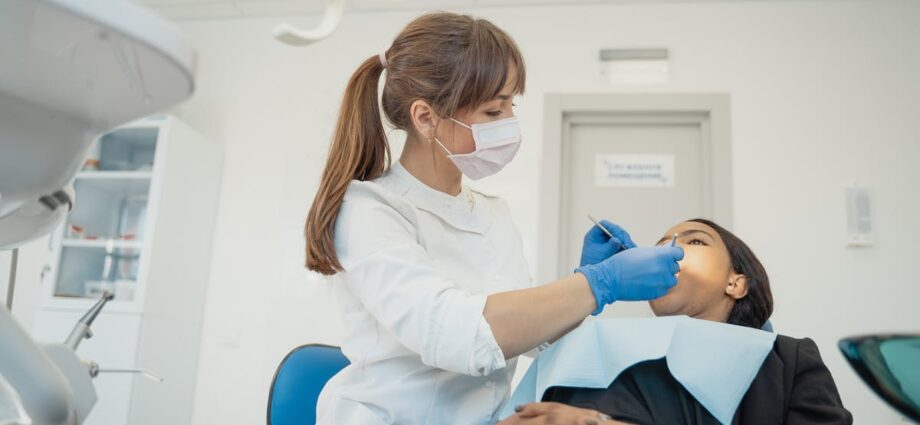Dentists who specialize in treating gum disease are known as periodontists. The periodontist is trained to be proactive in preventing further problems for your gums and teeth. Periodontists are dentists who concentrate on the structures around and supporting your teeth.
If you have bleeding gums or feel sensitive, it’s recommended to consult with a periodontist. Avoiding doing so increases your chances of developing periodontal diseases, tooth decay, and other dental health issues. Gum disease can lead to the loss of gum tissue, teeth, and even bone from the jawbone can result from gum disease that is not treated.
When to see a periodontist?
During periodontal therapy, your periodontist will be most concerned with your jawbone, gums, and connective tissues. It is highly recommended to see a periodontist as soon as you suspect there’s a problem. In the event of delaying your appointment, it can have serious consequences. Be aware of the warning signs that indicate that it’s time to see the periodontist.
1. Issues with Biting and Chewing
If you are currently having difficulties chewing or biting into your food, this could be an obvious sign of a problem with your teeth, and you should get your teeth examined whenever you can. A few of your teeth may have become loose if you’ve observed specific alterations in your bite pattern. When your teeth begin shifting out of place, you may experience a change in how your mouth “feels” when you bite down or chew food.
2. Bleeding and Swollen Gum
Consult a dentist specializing in periodontics and implant dentistry if your gums appear red, swollen, or bleeding after you floss or brush your teeth. Gum inflammation from periodontal disease can manifest in several ways. One is the bleeding that occurs during regular dental hygiene procedures like flossing and brushing. Inflammation, redness, and sensitive gums can all be symptoms of an infection or possibly an abscess that has developed in the periodontal region. Loss of teeth is just one health risk that can result from this.
3. Loose or Shifting Teeth
If we don’t get our teeth examined by a periodontist as fast as we can after suffering significant damage, they tend to lose shape and fall off our gums. Teeth shifting or migrating from their original positions can be one of the symptoms of periodontal diseases in their advanced stages. Losing a tooth can lead a person to experience many other issues, including difficulties chewing food and biting it.
Modern tooth replacement options like dental implants have mostly supplanted traditional alternatives like dentures and bridges. In fact, they’re the only alternative to traditional dental fillings that actually helps maintain healthy bone and promotes new bone formation. Know more about the benefits of dental implants by checking on the websites of reputable dental clinics offering such service.
4. Pain and Discomfort
It’s time to schedule your routine examination if your teeth cause pain and make life uncomfortable for you. If you don’t consult a periodontist promptly in the future, you’ll never know the kind of dental problems you might face future. When you experience discomfort in your gums or teeth, you must schedule an appointment with a dentist as soon as possible.
5. Receding Gums and Sensitive Teeth
One of the first signs of gum disease is noticeable longer teeth. The bacteria living in your gums’ pockets could eat away at the bone and gum tissue surrounding your teeth. This could result in your gums pulling out of your tooth, necessitating gum treatment. The discomfort you feel after consuming either cold or hot items suggests periodontal disease. Roots of teeth become increasingly exposed as gum disease progresses, increasing the risk of tooth decay and other oral health issues.

